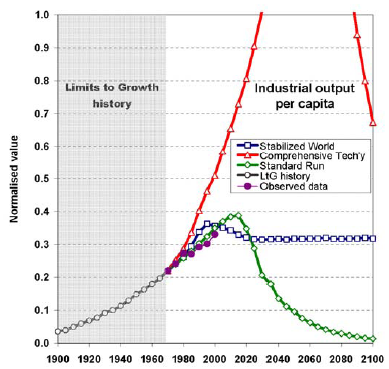I’m usually quick to point out the limitations of technology for reducing environmental and other problems. But that doesn’t mean it’s not important. Yesterday I took a tour that hilighted how big the opportunities can be when technology and slight lifestyle changes team up. The tour was of CalEPA’s LEED platinum skyscraper – evidently the first of its kind, but now a few years old. Interestingly, it was initially designed as an ordinary building, and design changes were introduced late in the game, which gives hope that most of the same innovations could be implemented as retrofits on older buildings.
When you walk up to the building, there’s no indication that there’s anything unusual about it. If anything, it’s massive (salvaged) stone decorative features lead one to think it could easily be an extravagant energy hog. That impression continues on the inside, with elegant and tasteful lighting and finishes. No hairy unwashed treehuggers freezing in the dark here.
Yet, the building uses a third the energy (per sq ft) of its peers nearby, even with a big datacenter on one floor that consumes a third of the energy in the 25-story structure. The big heroes are an efficient skin, with low-e windows and detailing to reduce solar gain on the south and west sides, coupled with an advanced HVAC system. Climate control combines 10,000 sensors with three different sizes of chiller unit and variable-speed motor controls. That way, equipment always operates near its optimum load. Soon, a retrofit will use groundwater (which has to be pumped out anyway) to aid cooling. Heating and cooling costs are lower, yet comfort is improved by the advanced controls.
The occupants certainly contribute a lot to efficiency. Over 80% use bikes or transit to commute, aided by a beautiful bicycle parking garage in the basement (complete with air compressor and lockers). Most prefer motion-sensitive task lights, so area lighting stays off. They adopted double-side network printers to reduce paper waste, and recycle assiduously. Worm-bin composting is a popular office activity. As a result the building managers have to haul trash only twice a month instead of the typical twice a week. Because staff don’t have to spend as much time with regular garbage, they have more energy to figure out how to recycle used computers and other unusual materials.
Sometimes the benefits are unexpected. To reduce nighttime lighting loads, most of the leaning in the building happens during the day. Side effects include greatly reduced reports of theft and workers’ comp claims, better cooperation on cleaning and recycling (aided by the low waste flow), and greater occupant satisfaction. It turns out that it’s easier to like someone you see on a daily basis. Materials have side benefits too. Zero-VOC paints mean that occasional repairs don’t stink up the place and needn’t be confined to weekends. Low-volatile, recyclable carpet tiles turn out to be extremely durable and repairable, and permit creative design.
The amazing thing is that most of the features paid for themselves in under two years, with correspondingly huge ROIs. None takes a radical change in workstyle, but there’s lots of synergy among them. It wasn’t easy to pull this off, in the sense that it took a lot of thinking, but if you think thinking is fun, then you wouldn’t call it hard either.


